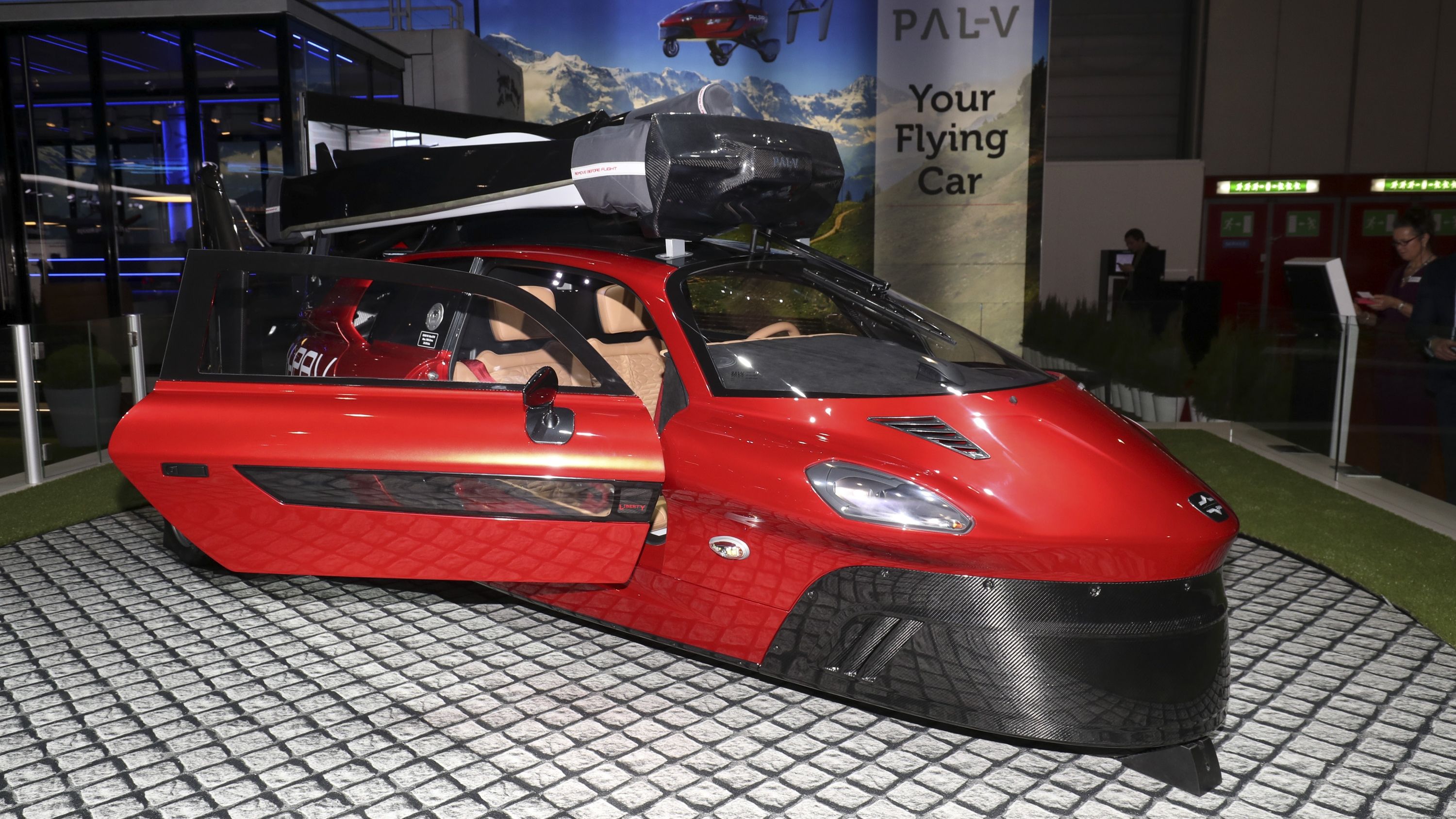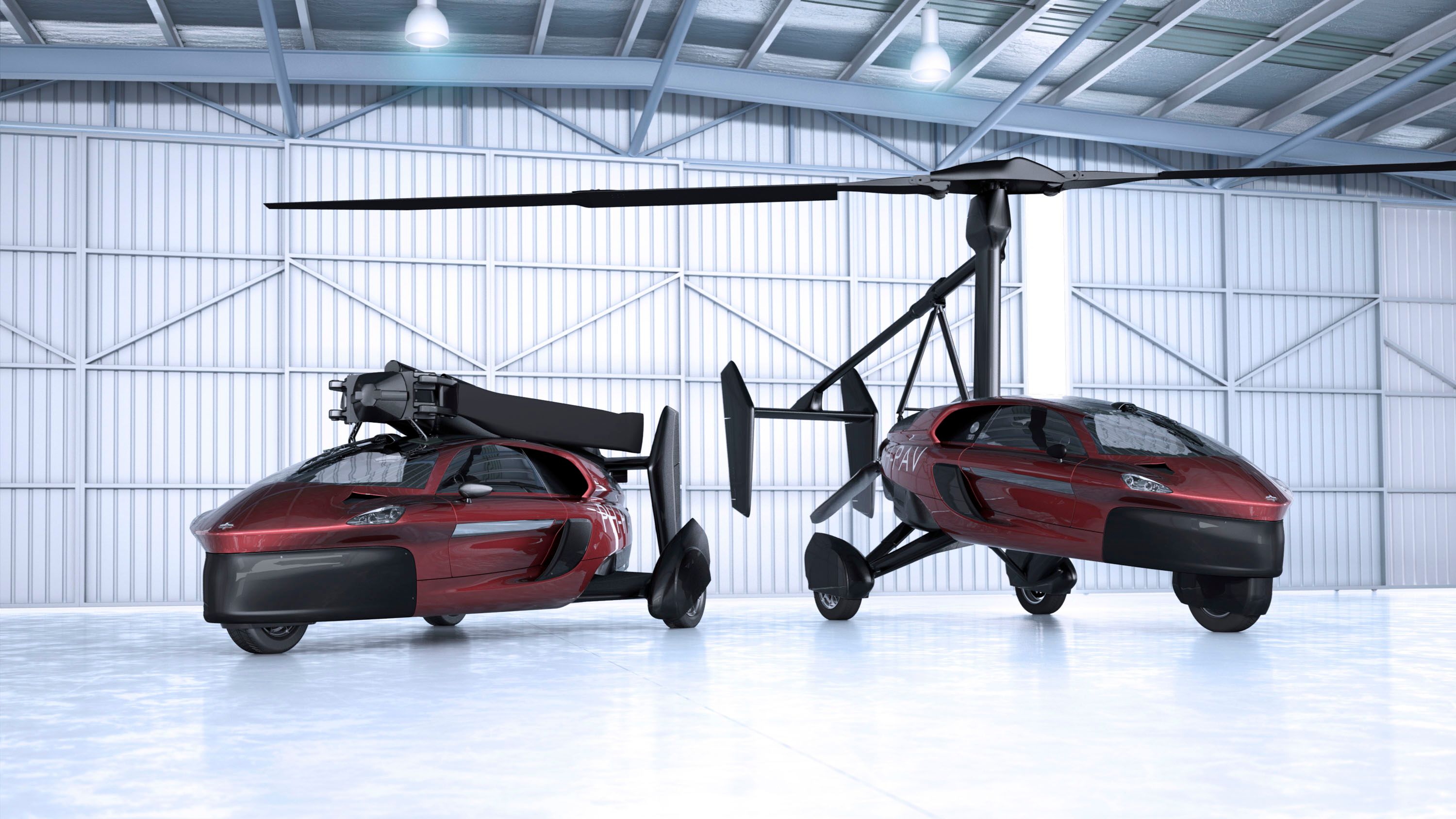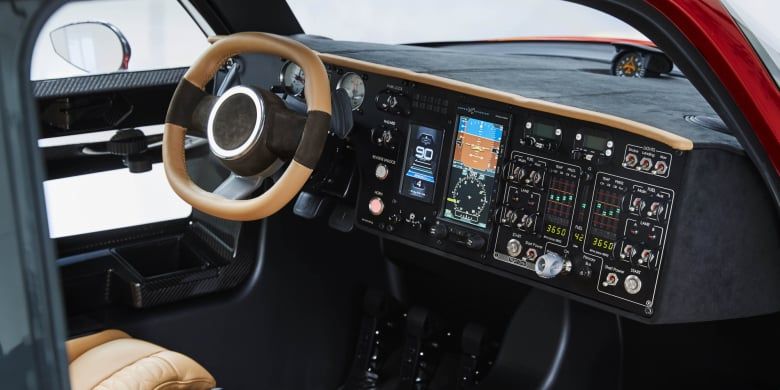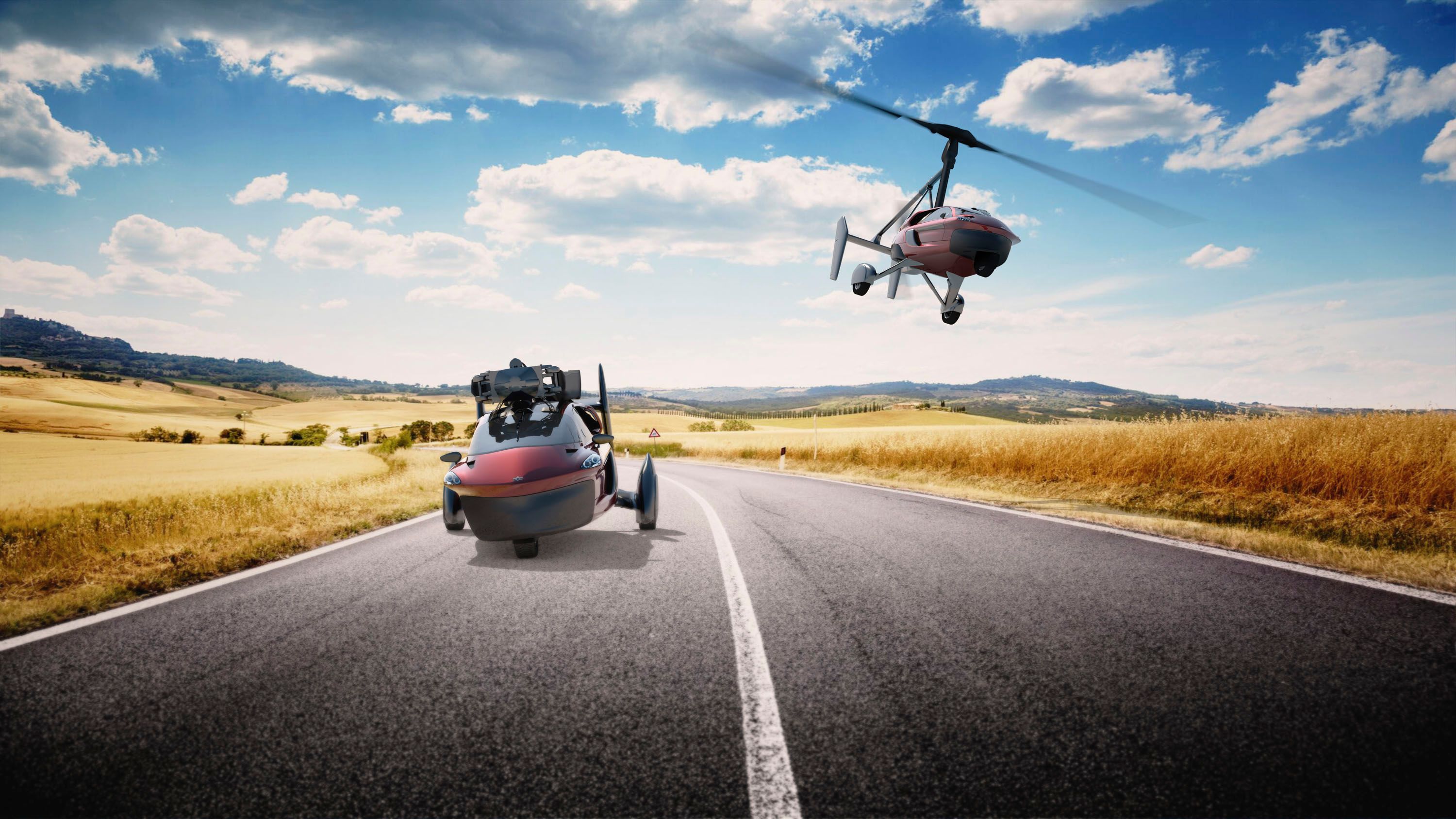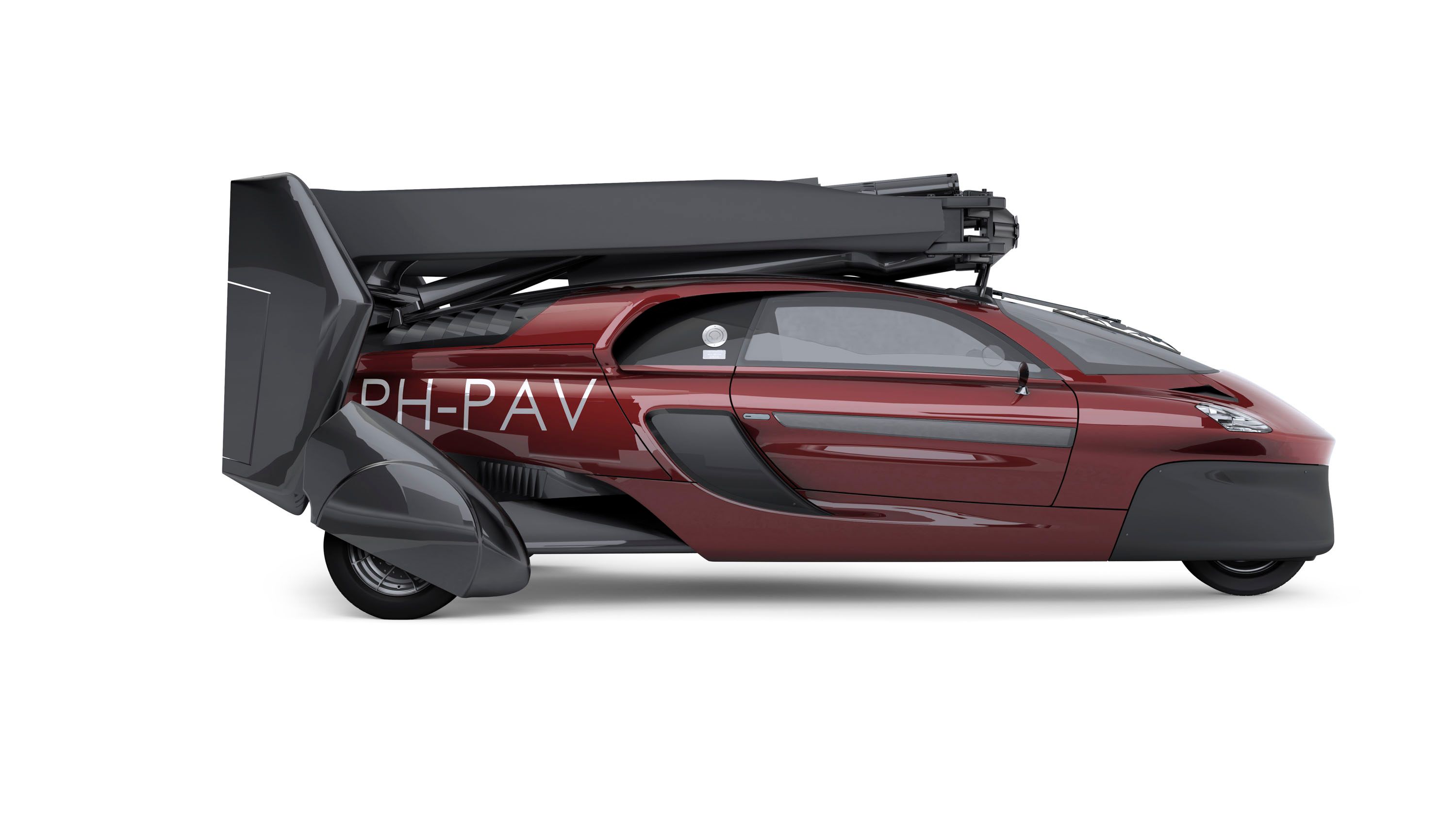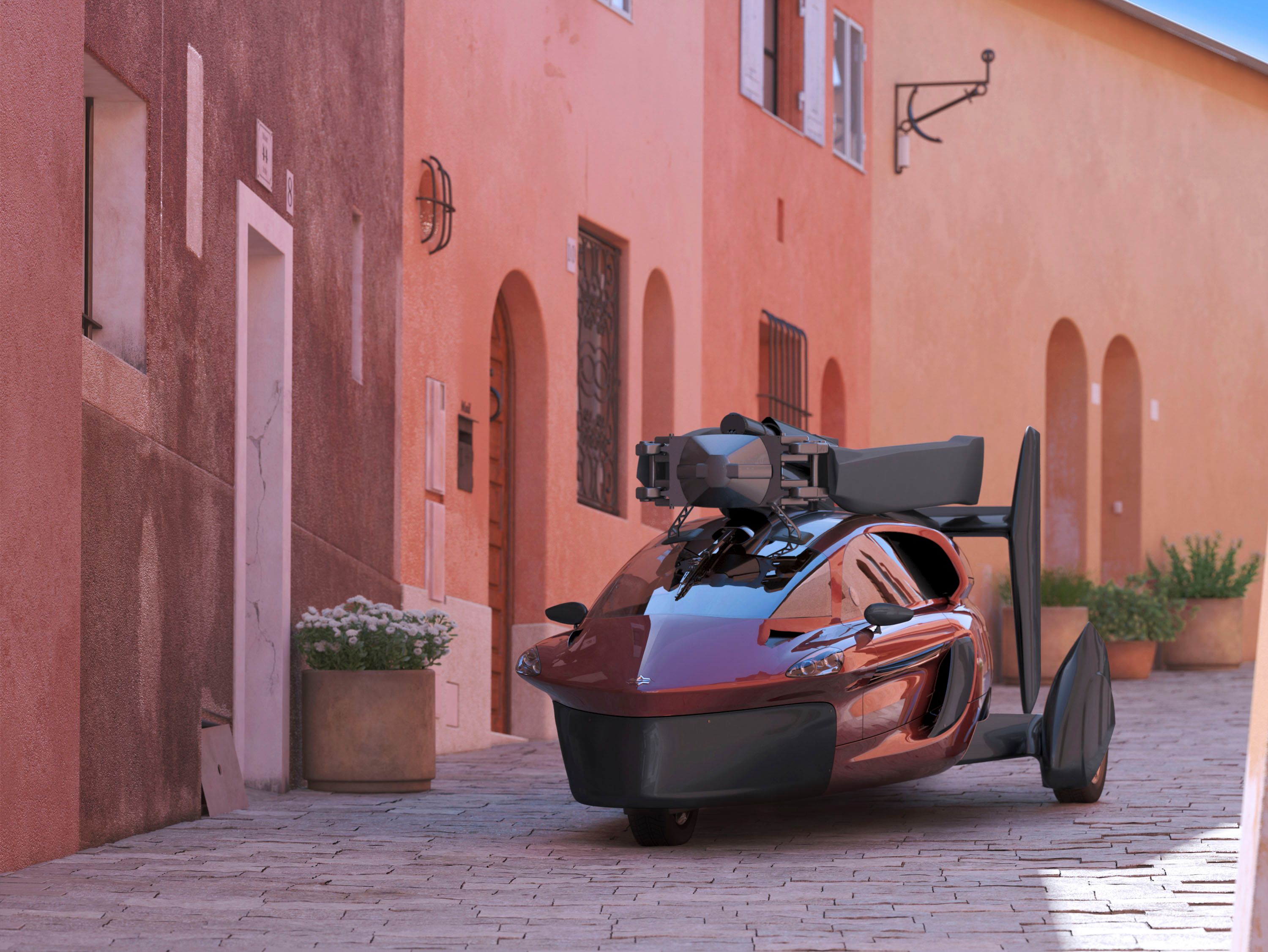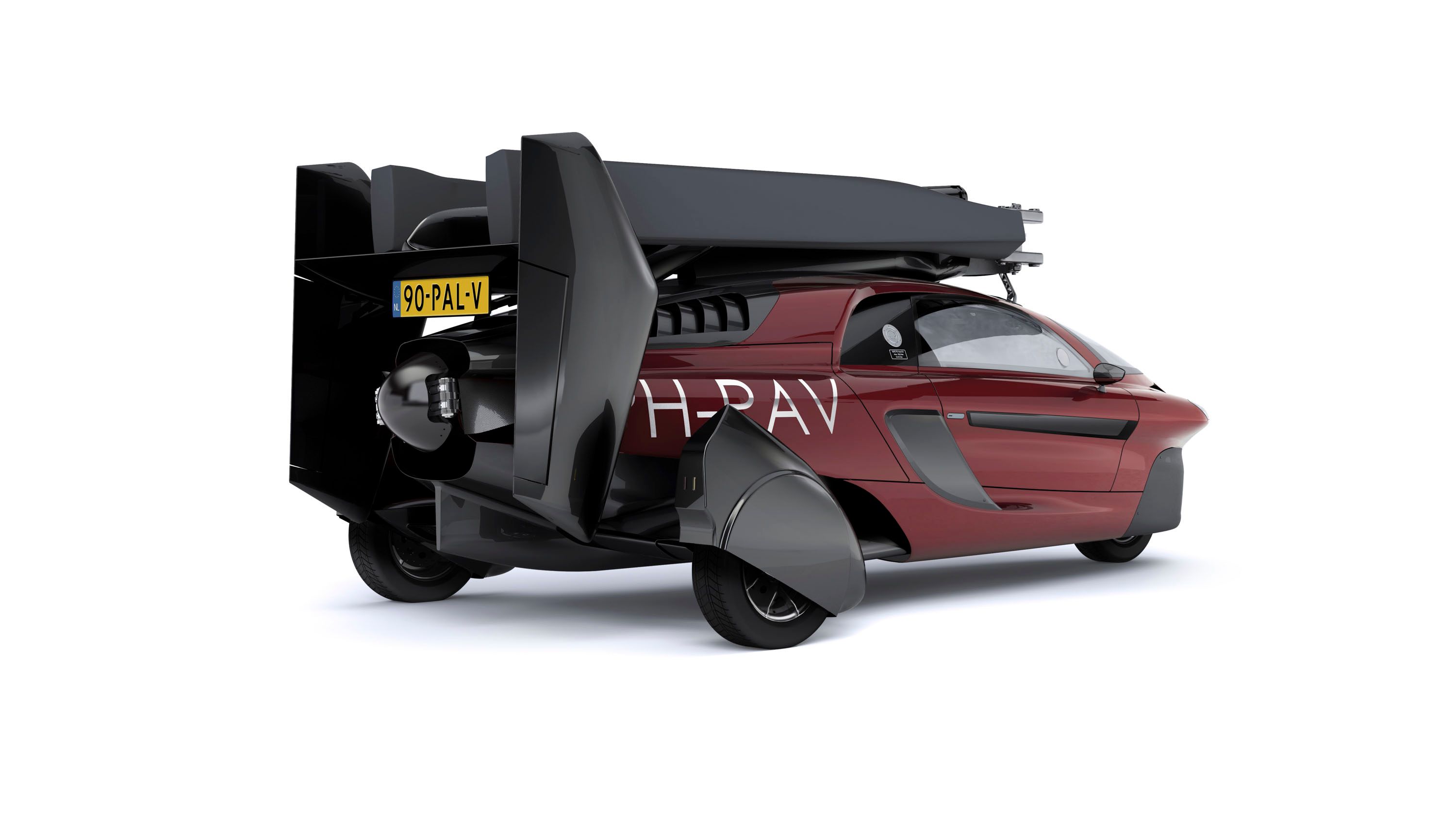The PAL-V, the world’s first commercial flying car for the masses, has finally made its debut at the Geneva Motor Show. This isn’t the first time we’ve covered it, but seeing it sitting on the show floor is a brutal reminder that flying cars are coming, and this helicopter-like whip for the road and air may just set the standard. It has two engines, one for flying and one for driving, and an interior that somehow mixes road cars and airplanes into one unit. We’ve talking about the PAL-V on multiple occasions but let’s take another look at it now that it has made its debut.
PAL-V Liberty Exterior Features
The PAL-V looks like nothing you’ve never seen, not that it shouldn’t since you’ve never really seen a flying car. It has a sporty nature to it thanks to the typical Italian design. It’s got all the typical equipment found on road cars including headlights, taillights, and brake lights. When in driving mode, the propeller folds up and resets gently above the room. While it may be unique, it’s not any larger than your typical car, so the folding nature of the flight system actually allows it to park in any regular parking spot.
All told, it’s not a bad exterior design, the doors have integrated air intakes as do the rear pillars. It’s as aerodynamic as possible with its rounded body and pointed nose. The tail fins may provide some resistance, but if you look at the shape, you can see that they will cut through the air like a hot knife in butter. Despite the overall functionality and the convenience of being able to fly and drive without exiting the vehicle, it will most likely remain a novelty on the streets so don’t expect to see too many of these sporty copter-cars on the road anytime soon.
Pal-V Liberty Interior Design
The interior successfully blends airplane control and car control into one vehicle which is, needless to say, quite different. It is, however, exactly what you would expect from a car with this kind of functionality. It’s void of any high-tech digital displays, but you do get a typical altitude\ cockpit display and a couple of physical gauges ahead of the steering wheel. The high-end, or Pioneer Edition, will get your typical Italian materials like carbon fiber, leather, and Alcantara. Or, as PAL-V puts it, “Italian designed and hand-crafted interior, using premium level materials.”
From what we’ve seen in Geneva, you can expect leather seating, a leather-wrapped steering wheel, and a nice leather strip on the dash. Carbon fiber will adorn the door panels while Alcantara will be found across the majority of the dash and the spokes of the steering wheel. Truth be told, it’s quite an attractive interior for the world’s first purchasable flying car.
PAL-V Liberty Performance
The PAL-V Liberty is able to drive and fly because it makes use of two engines. Engine size has yet to be released, but the engine used for driving makes up 100 horsepower and delivers a fuel economy of 7.6-liter per 100km. On a full tank of fuel (Euro 95, Euro 98, or E10) it can cover 1,315 km or around 817 miles. Maximum speed in drive mode is pegged at 160 kph or just under 100 mph, while the sprint to 62.1 mph takes less than 9 seconds.
You can give thanks for the long range to the fuel tank, which holds 100 liters of fuel, and its lightweight presence. Curb weight, without any load (or people inside) is 664 kg and it’ll weigh a total of 910 kg when fully loaded (maximum takeoff weight.)
In flight mode, the second engine delivers 200 horsepower and sucks down the fuel at 26-liters per hour. Do the math and that computes to just over four hours of flying time with a maximum range of 400 to 500 km (250 – 310 miles.) It can fly as high as 3,500 meters but must maintain at least 50 kph to maintain level flight. Cruising speed is as high as 160 kph with maximum speed coming in at 180 kph.
Technical Specifications
|
Capacity: |
2 persons |
|
Mass Empty: |
1.413 lbs |
|
Maximum Take-Off Weight (MTOW): |
2,006 lbs |
|
Fuel type: |
Premium or Super Unleaded gasoline** |
|
Fuel capacity: |
26.4 gallon |
|
Dimensions Drive-mode: |
13.1f L x 6.6f W x 5.4f H |
|
Dimensions Flight-mode: |
20.1f L x 6.6f W x 10.5f H (Rotor diameter is 35.3f) |
|
Maximum baggage load: |
44 lbs |
|
DRIVE MODE |
|
|
Max Speed: |
100 mph |
|
Top speed acceleration (0-62 mph): |
<9 seconds |
|
Engine power: |
100 hp |
|
Fuel economy: |
31mi/gallon |
|
Range: |
817 mi |
|
FLIGHT MODE |
|
|
Economic cruise speed: |
87 mph |
|
High cruise speed (90% range): |
100 mph |
|
Maximum speed: |
112 mph |
|
Min speed for level flight: |
31 mph |
|
Engine power: |
200 hp |
|
Maximum operating altitude: |
11,480 feet |
|
Useful load: |
542 lbs |
|
Take-off roll (MTOW, MSL): |
590 feet |
|
Take-off distance (+ 15m obstacle clearance) (MTOW***, MSL****): |
1,082 feet |
|
Landing roll distance: |
98 feet |
|
Fuel economy: |
6.9 gallons/hour |
|
Max Range (with ½ hour reserve fuel*, MTOW): |
248 mi |
|
Max Range (with ½ hour reserve fuel, single person operation, MSL): |
310 mi |
|
Max endurance (with ½ hour reserve fuel, MTOW): |
4.3 hours |
PAL-V Liberty Pricing
The world’s first production flying car doesn’t come cheap. PAL-V is asking €499,000 for the Pioneer Edition. Once all 90 of those models have been made and sold, PAL-V will begin offering the Sport Edition, which will command a sticker price of €299,000. That model leaves things like the hand-laid carbon fiber, EFIS, power heating, and dual controls as options and also leaves out all hand-crafted interior goodies or basic customization options.
Reservations for the PAL-V Liberty are open now, and deliveries are expected to commence sometime in 2019. Keep in mind, however, that your initial deposit is non-refundable unless you opt for the ESCROW form of deposit.
Can Anyone Fly a PAL-V Liberty?
Yes and No. As long as you can obtain and license to do so, then you can operate a PAL-V Liberty. However, in order to operate one, you must possess both a driving and flying license. PAL-V says it will work with your country to make sure insurance is available and will even help you locate a pilot school if needed. Keep in mind that the PAL-V is being built with the U.S. and Euro aviation standards and laws in mind. Those are applicable for most countries, but it must still be licensed in your country prior to operating.
References
Read more Geneva Motor Show news.

